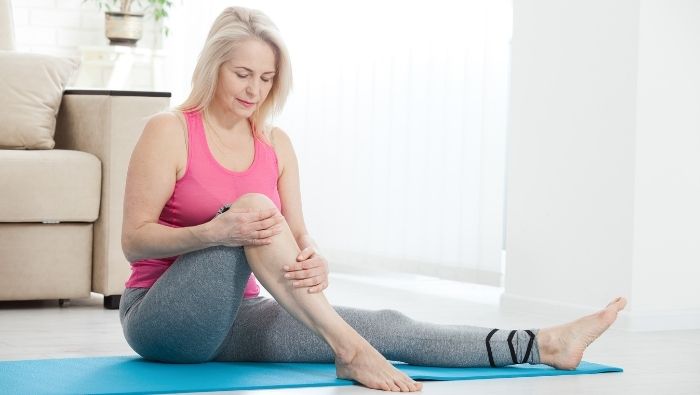Managing Arthritis With Affordable Low Tech Devices
by Debra Karplus

Managing your arthritis is easier than ever with these affordable, low-tech devices for the bedroom, bathroom and kitchen.
According to the Centers for Disease Control and Prevention, it is projected that by 2025, 67 million adult Americans will have doctor-diagnosed arthritis, a chronic disease that affects not just older adults but younger people and children as well.
It’s not curable, but symptoms can be managed. Limitations in range of motion, joint pain, muscle weakness, and overall fatigue impede people with arthritis. Many low-tech devices help make daily living tasks simpler. They are available online or in discount stores. Using specially designed devices for a task is the next best thing to independence.
So, what are some tools that can make living with arthritis easier?
Dressing
Button-down garments are typically easier to do than over-the-head. Buttons can be replaced with Velcro closures. Or you can use a buttonhole device (approximately $12). For clothing with zippers, a zipper pull that extends a zipper handle eases zipping.
For lower-body dressing, a reacher (approximately $15) helps. Or fabricate a dressing stick with a dowel rod and hook. There are a variety of stocking aids (approximately $20) and sock devices on the market. Slip-on shoes are easier to don than tie shoes, though tie shoes generally provide more foot and ankle support, so they are safer. You can trick your tie shoes into being slip-ons by purchasing elastic shoelaces (under $10), which come in various colors to match your shoes. Buy several sets of laces and have someone put them in for you. Another tool that simplifies dressing is a long-handled shoe horn (approximately $15).
You deserve a comfortable retirement.
Bathing
A few inexpensive purchases will prevent bathing from becoming frustrating.
Purchase a hand-held shower head (approximately $50 at most home improvement stores). Your handy neighbor can install it easily. (See Finding an Affordable Safe Handyman for Simple Repairs.)
Another helpful item at bath time is a long-handled bath sponge (approximately $10). The plastic handle can be heated and adjusted. If you have a problem grasping objects, you may prefer a bath mitt into which you slip your hand and also a bar of soap.
For oral care, try using a wide-handled toothbrush if grasping is problematic for you. A hair brush or comb can have an adapted handle, too.
Eating
If you are preparing a meal, you can simplify this task. Use a tall stool or chair so that you can do much of the meal prep seated. There are a myriad of gadgets at discount, home improvement, and hardware stores that will make meal prep more pleasant. Who wouldn’t benefit from an electric can opener or a jar opener? Special cutting boards can be purchased to accommodate a disability, too.
For meals away from home, toss a few gizmos into a sack or purse and you’re good to go. If your plate has a tendency to slide around when you eat, use a plate with suctions on the underside. Better yet, purchase non-slip plastic pads for under your plate. If you’re concerned about being a messy eater, try using a plate guard that comes in plastic or metal or a scoop dish or deep dish. This will help you keep the food on the plate.
If deficits in your shoulders impede getting food into your mouth, try a long-handled spoon or fork. Curved forks, knives, and spoons are an alternative to long-handled utensils and are available with different amounts of curve in them. If grasp is a problem for you, there are numerous wide-handled forks and spoons and even a combination utensil called a spork. A swivel fork or spoon keeps the food on the utensil when gravity doesn’t.
Additionally, there are knives with wide handles, also called built-up handles, and even rocker knives that cut food by using a rocking instead of sawing movement. If grasp is a more severe problem, a utensil grip, sometimes called a universal cuff, subtly straps around your hand and has a narrow “pocket” that holds the handle of the spoon or fork
If quenching your thirst or enjoying a cup of coffee is a challenge, experiment with some of the options in adaptive equipment for drinking. Glasses and cups with special handles and shapes are available. Cups with lids will minimize spilling and are very popular. Most restaurants can accommodate some of your special eating needs simply with a straw or a cup with a lid.
Reviewed November 2023
About the Author
Debra is an occupational therapist, accountant, teacher and freelance writer. She is a writer for Advance for Occupational Therapy Practitioners. She also writes for Grand Magazine, has some items (fiction and non fiction) selling on Amazon (Kindle), has written several travel articles for the Champaign-Urbana News-Gazette and several articles for freelancewriting.com and volunteers as a money mentor for the University of Illinois Cooperative Extension money mentoring program. Learn more about her at DebraKarplus.blogspot.com.
Sign me up for a comfortable retirement!
Sign me up for a comfortable retirement!
Popular Articles
- Comparing Retirement Housing Options
- How We Retired With Almost No Savings
- How Retirees Can Live on a Tight Budget
- 9 Things You Need to Do Before You Retire
- What You Need to Know About Long Term Care Insurance Before You Retire
- You Didn’t Save Enough for Retirement and You’re 55+
- Could Debt Derail Your Retirement? A Checklist
- Your Emergency Fund In Retirement: A Comprehensive Guide
- Managing Your 401k In Your 50s

